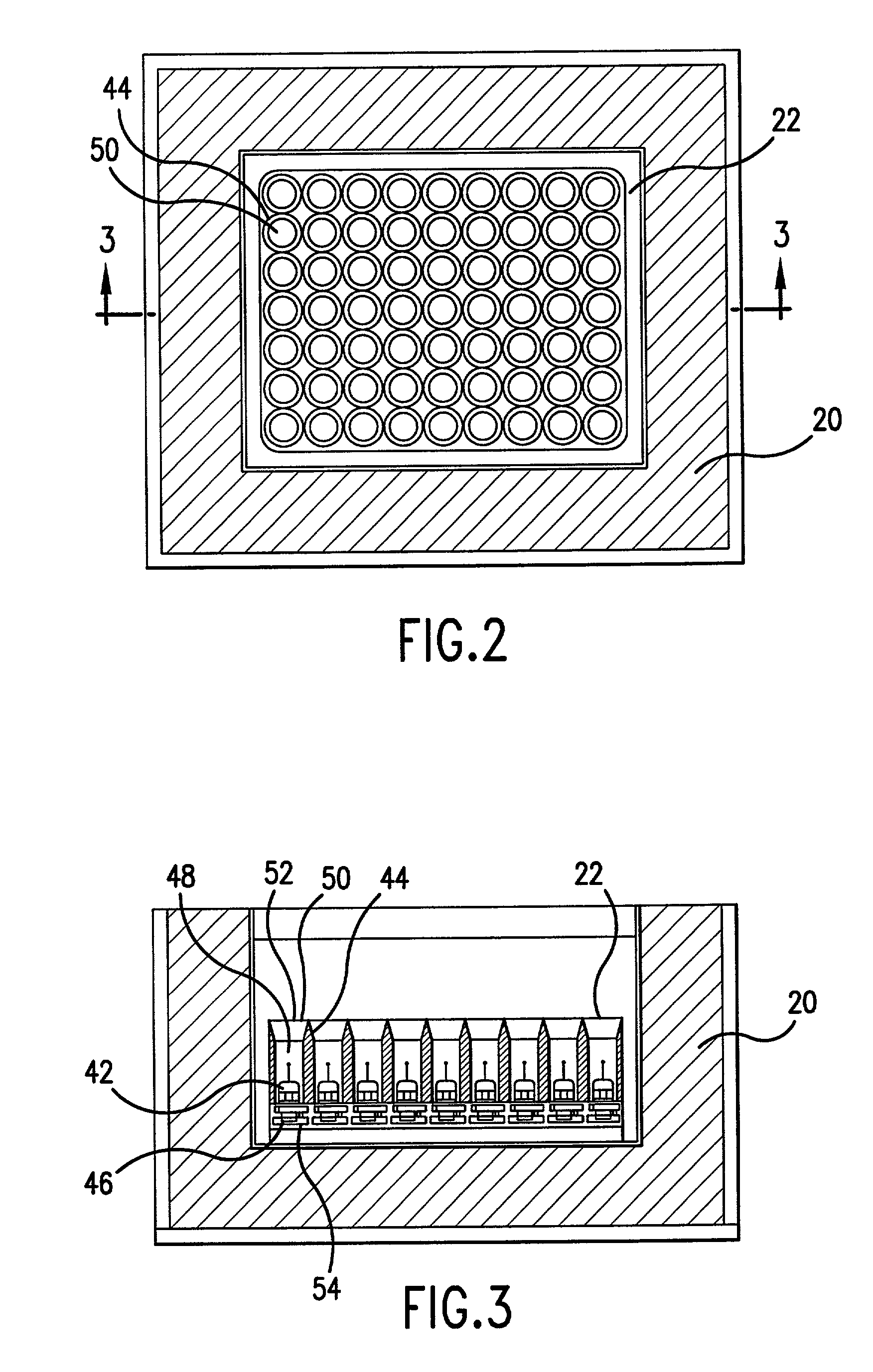Automated sample handling for X-ray crystallography
a sample handling and x-ray crystallography technology, applied in the field of x-ray crystallography, can solve the problems of ice around, near, on and/or in the crystal, more susceptible to the effects of turbulence and draft, and the difficulty of experimenters starting to use cryotechniques, so as to reduce the number of trained operators, increase the speed of analysis, and increase the effect of analysis throughou
- Summary
- Abstract
- Description
- Claims
- Application Information
AI Technical Summary
Benefits of technology
Problems solved by technology
Method used
Image
Examples
Embodiment Construction
[0081] As used herein, the term "robot" means a machine or device that works automatically or by remote control. As used herein, the term "crystal" means an ordered array of molecules that is capable of diffracting X-rays. As used herein, the term "sample" refers to the crystal contained in the loop of the device for holding a crystal.
[0082] Referring now to FIG. 1, a system 10 for carrying out the method of this invention comprises an X-ray generator (not shown), a positioning device, such as, for example, a goniometer, 12 mounted on a rotating spindle 14, an instrument base 16, a CCD camera 18, an insulated container 20, a sample rack 22, a multi-axis robot 24, a controller 26 for the robot 24, an automation computer 28, a data collection computer 30, at least one motor controller 32, a detector 34, a cold stream nozzle 36, a cold stream actuator 38, and a motor 40 for translating the spindle 14 along its major axis. Although the computers 28 and 30 are shown as individual compone...
PUM
 Login to View More
Login to View More Abstract
Description
Claims
Application Information
 Login to View More
Login to View More - Generate Ideas
- Intellectual Property
- Life Sciences
- Materials
- Tech Scout
- Unparalleled Data Quality
- Higher Quality Content
- 60% Fewer Hallucinations
Browse by: Latest US Patents, China's latest patents, Technical Efficacy Thesaurus, Application Domain, Technology Topic, Popular Technical Reports.
© 2025 PatSnap. All rights reserved.Legal|Privacy policy|Modern Slavery Act Transparency Statement|Sitemap|About US| Contact US: help@patsnap.com



